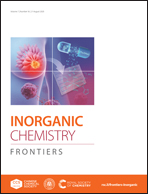Hierarchical CoP@Ni2P core–shell nanosheets for ultrahigh energy density asymmetric supercapacitors†
Abstract
Transition metal phosphides (TMPs) as advanced electrode materials for supercapacitors (SCs) have received great attention due to their excellent redox activity, high electrical conductivity and metalloid feature. In this work, we successfully synthesized hierarchical core–shell CoP/Ni2P nanosheets (NSs) on carbon paper through a facile deposition and phosphating method. The optimized hierarchical core–shell CoP@Ni2P nanosheet electrode shows a high specific capacitance of 2644 F g−1 at a current density of 1 A g−1. Meanwhile, three-dimensional (3D) α-Fe2O3 grown on carbon paper was also synthesized as a negative material by a hydrothermal and annealing treatment method, which manifests excellent performance of 539.2 F g−1 at 1 A g−1. Besides, an asymmetric supercapacitor (ASC) was assembled, using CoP/Ni2P nanosheets as the positive electrode and α-Fe2O3 as the negative electrode in 3 M KOH electrolyte, which exhibits an excellent energy density of 48.5 W h kg−1 at 793 W kg−1 and a capacity retention rate of 98.8% after 10 000 cycles. The excellent electrochemical performance and outstanding cycling stability of the asymmetric supercapacitor show its great potential application in future energy storage devices.



 Please wait while we load your content...
Please wait while we load your content...